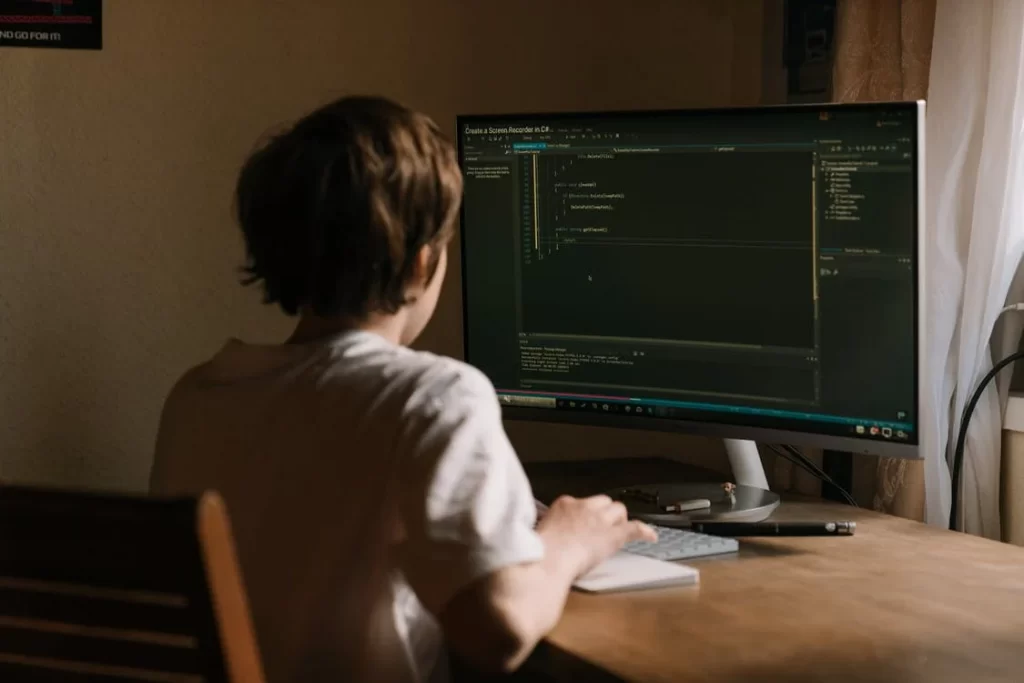How Do You Explain Coding to a Child? 3 Simple Steps
To start with, you need to understand that you cannot force children into coding. There are many reasons why some children will never be good or enthusiastic coders, and if you are struggling to ignite your child’s interest, then wait until the teenage years come around when your child will be more enthusiastic about sitting in a chair for hours and staring at a screen, (or as teens call it, a normal day). This is why many parents turn to Minecraft coding for kids as a fun way to ignite this passion.
Step 1 – Patience and More Patience
Not to push the point, but if you try to force coding onto your kids, you may scare them off it forever. Programming in all its forms has a weird sort of appeal that seems to click without warning or reason. Somebody may dabble with coding all their life, and then for no reason, hit a point where they see it for the world of complex problems that it is. They see the Matrix. They stop seeing strings of numbers and characters and start seeing the code for the language that it contains. If you are struggling to teach your children coding, then wait a few years and try again.
The idea that young coding prodigies become more successful when they are older is completely false. Coding offers career success at any stage of life. Starting young is no guarantee of success, nor does it make success any easier. Start your kids with something simple like a coding for kids free course and go from there. You can always come back to them at a later stage in your child’s life if he or she isn’t enthralled by the subject.
Step 2 – Explaining the Premise
This is probably the trickiest part of the entire process. People have thought up hundreds of ways of doing it, and frankly it is hard to choose a single set of explanations that will work universally. Your best bet is to offer your child a way to see results as quickly as possible. Their first program should balance simple “Hello World” program, but the premise should be explained long before your child starts typing code.
Again, this article isn’t able to suggest a perfect way to explain the premise, but if you can show simple commands and simple answers, then it is easier for a child to comprehend. You may start with concepts about how a remote-controlled device sends a signal to move forwards and the device moves forwards. You can show diagrams about how a command is issued to your computer to turn up the volume, and the command is processed and then signals are sent to make the speakers louder. Some people even explain programming using human interactions, such as how you send a message to your brain to move your hand, and how your head (the computer) processes the command and then sends messages to your muscles. Again, there are too many ways to count, but try to think back to how you understand the concept of programming.
Step 3 – The Hello World Program
Explaining by doing. This should be your third step. You start by laying the foundations, and by taking things slow and maintaining your patience, with the understanding that your child may not like programming right away. Giving a child a little hand’s on experience is a great way of helping them understand programming. You need to start with a very simple, “Hello World” program. They need to be able to see how the inputting of code results in something that appears on screen.
Do not try to explain the concepts, in the same way that you don’t explain architectural structural stability when teaching your child how to play with Lego blocks. Consider a few additional programs you can quickly build together because they will help move things forwards. If your child is unimpressed with the program, then additional programs and lessons may help spark some interest. On a similar note, if your child loves the “Hello World” message and wants more, then you have more program ideas and lesson plans in your back pocket and ready to go.



